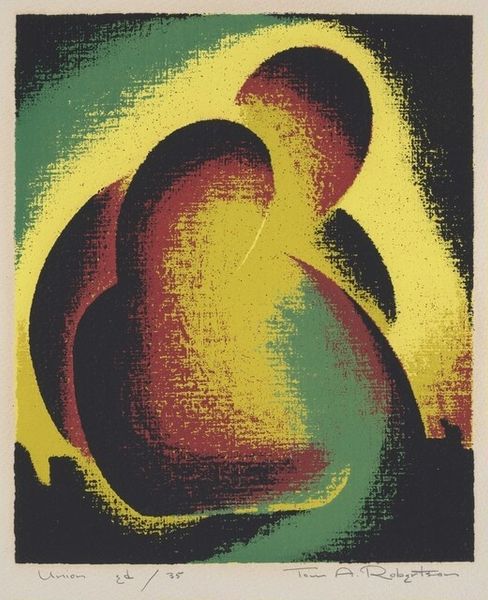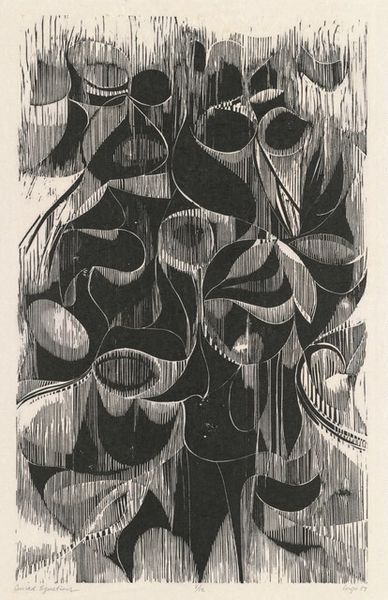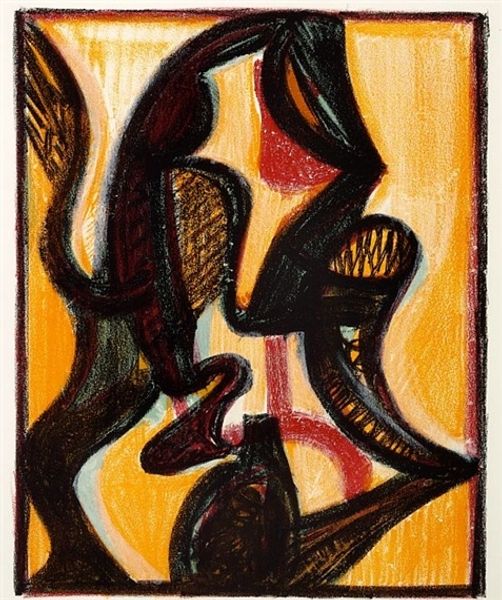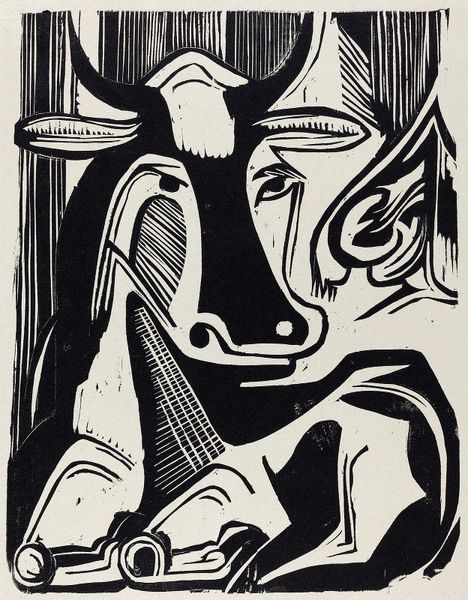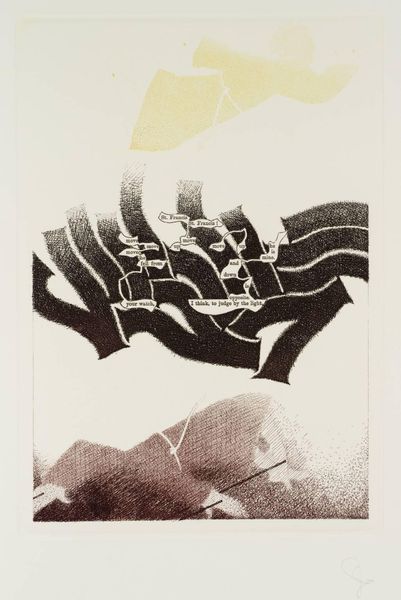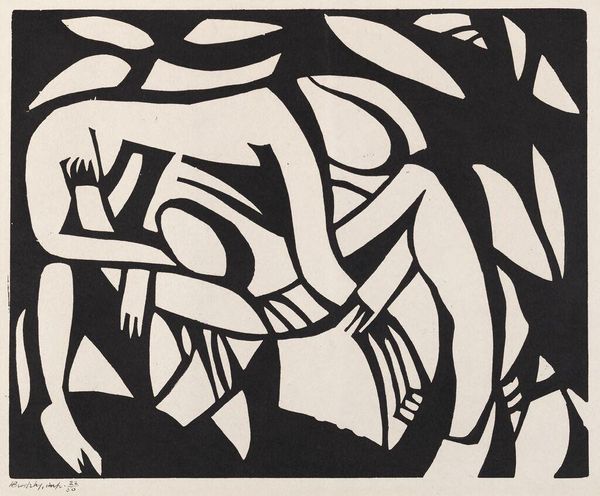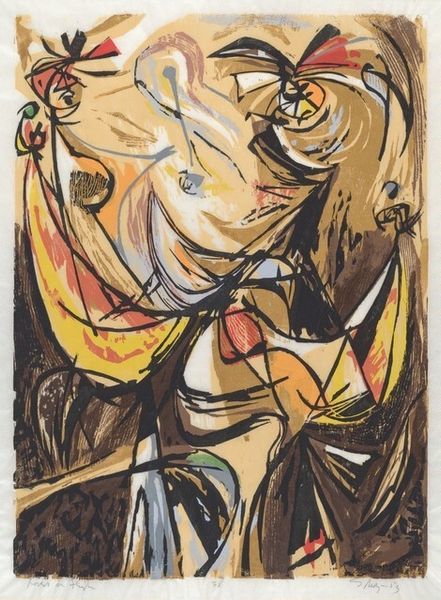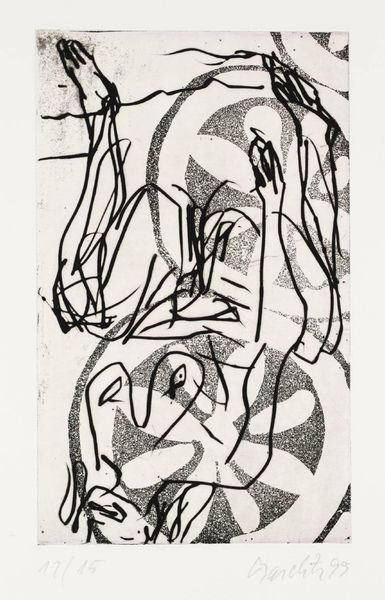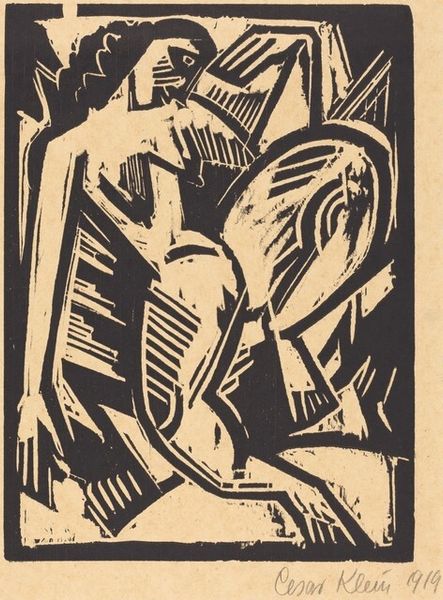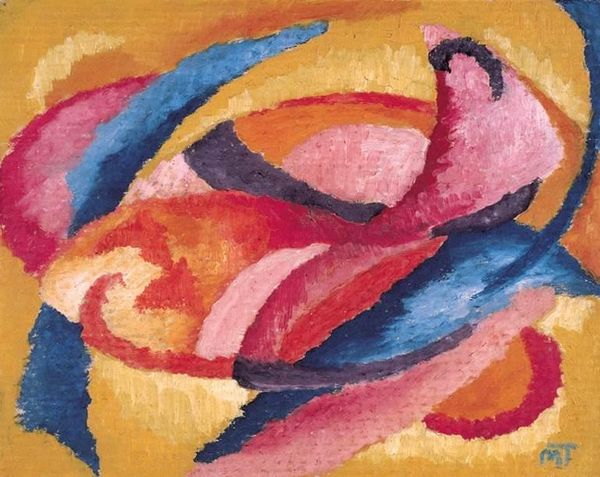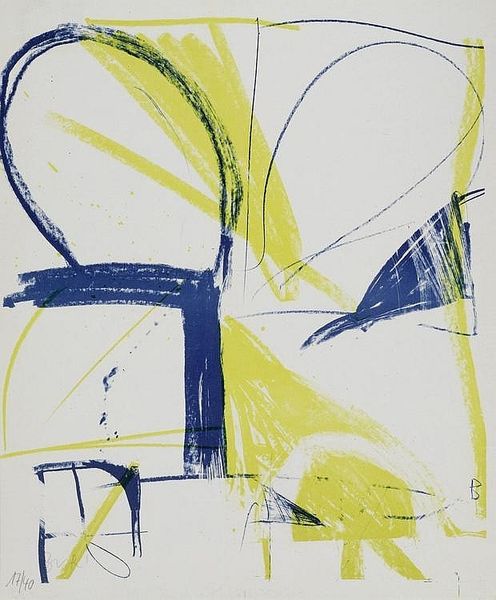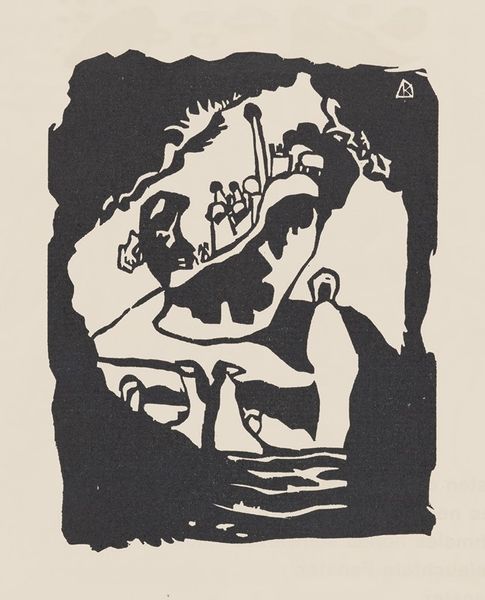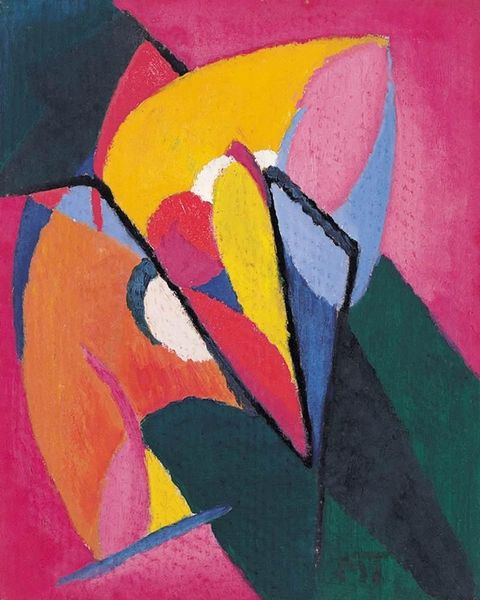
#
abstract-expressionism
# print
#
caricature
#
pop art
#
geometric-abstraction
Dimensions: image: 26.99 × 21.59 cm (10 5/8 × 8 1/2 in.) sheet: 33.02 × 31.75 cm (13 × 12 1/2 in.)
Copyright: National Gallery of Art: CC0 1.0
Editor: This is Tom A. Robertson's "Composition #4," a print from around 1940. I’m struck by its playfulness. The shapes are so bold and bright. It almost looks like a face, but not quite. How do you interpret this work? Curator: It certainly dances on the edge of representation. Notice how Robertson uses shapes and colours to suggest form without explicitly defining it. The black circle could be an eye, but it also functions as a graphic element. Consider the cultural memory embedded in abstract forms – the subconscious associations we make with them. Do you think it carries symbolic meaning, despite the lack of obvious imagery? Editor: I suppose I hadn’t thought about that. I was more focused on the "pop" art feeling of it all, and the pure aesthetic appeal. Are there specific symbols from the 1940s that resonate here? Curator: Perhaps not direct, clear symbols. But the optimism and dynamism of the colours – the yellow and the hints of green – evoke the forward-looking spirit that followed the Great Depression. The abstract language allowed artists to express complex emotions without resorting to direct, potentially problematic, representations. Does that change how you perceive its playful quality? Editor: It adds a layer, definitely. Knowing that there’s a deeper conversation happening beneath the surface makes it more interesting. Curator: Exactly! Abstract art can be a repository for collective feelings and anxieties, coded in shapes and colors rather than explicit images. Editor: So, it's like Robertson is speaking to us in a language we understand, even if we don't realize we understand it? Curator: Precisely. A language of feeling and association. It shows the ongoing evolution of visual communication, using elements recognizable to all, to evoke the memory of a particular sentiment. Editor: I see it now! That’s given me a whole new way to think about abstract art. Curator: Indeed. It highlights how art captures, transforms, and presents sentiments without resorting to overt or conventional illustrations.
Comments
No comments
Be the first to comment and join the conversation on the ultimate creative platform.
